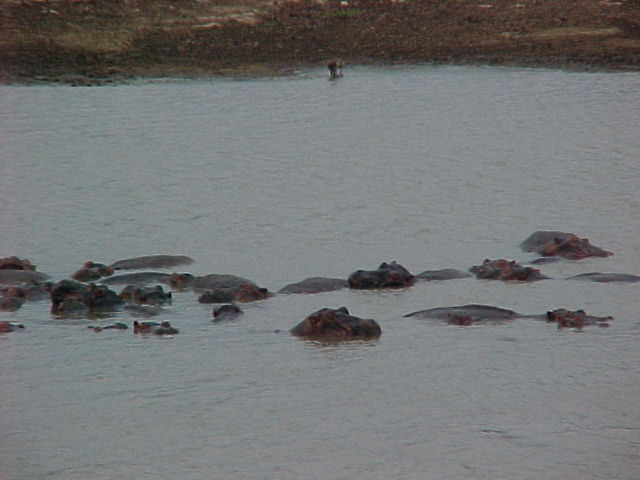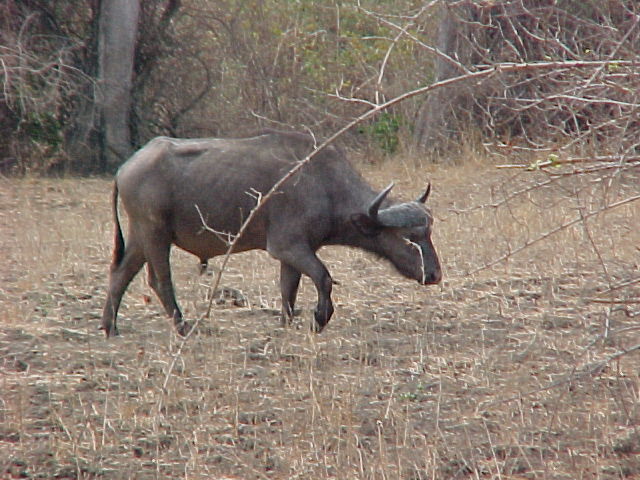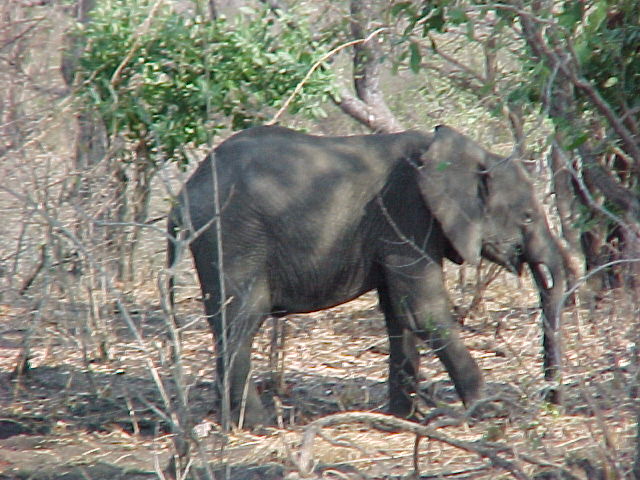 Oh, How are The Mighty Have Fallen
Oh, How are The Mighty Have Fallen
Once upon a time I was elevated to the position of Mine Superintendent (Acting Unpaid) and in that elevated position I was sent to relieve people going on leave or sick or even when they had been very naughty tortoises and had their blasting licences suspended by none other than Evaristo Kambaila, the new Chief Inspector of Mines. Evaristo had been through the usual learner mine official experience and, no doubt, had taken a number of hard knocks along the way. When he realised that his natural brilliance and, as he thought, undoubted ability, were not given sufficient recognition in the way of rapid promotion, he quit the mines and joined the Government Inspectorate. When Peter Harmer, the last Muzungu to be Chief Inspector came to retire it was only natural that our well connected Evaristo be elevated to that awesome position of power. To be fair Evaristo was not a vindictive chap but he did have a couple of scores to settle and settle them he did!
On a previous acting role, that of Mine Sup (Technical), at Nkana Division, I had need to go underground at the South Orebody shaft to look at a place that could be used as a start point for a ramp going up from a haulage to serve a number of intermediate levels. I was escorted by the splendid Spike Hovelmeir who knew all the Nkana Mines well with a lifetime of service, not least as the person in charge of the mine rescue teams, under his belt. We found the cross cut, quite close to the shaft and started into it. It was full of rubbish, broken drill steels, an old coco pan and then, horror, horror, considerable quantities of abandoned explosives in very dangerous condition. Blasters, over the years, their jobs done but with a stick or two surplus to requirement were late to catch the cage to surface so, rather than return to put the surplus in an explosive box, they just lobbed the stuff into this one convenient crosscut. Over the years this had become what could only be described as a disaster just waiting to happen. Spike, totally embarrassed about this find, had me taken away to surface whilst he supervised the disposal of the stuff.
The matter was reported to the Lord and Master, The Manager Mining, Mr Dave Lendrum, who issued instructions that all such places and other out of the way nooks and crannies should be inspected to ensure that any similar caches be discovered and properly disposed of. I thought no more about it, my acting time was up and I returned to little Chibuluma Mine to bang my head against rocks there.
The search for the abandoned explosives proved far more fruitful than expected, especially in the “water drives” at Mindola Shaft. These drives are mined in parallel to the main haulages at a slightly lower (1 metre) elevation. They are mined via angled crosscuts from, and advance ahead of, the haulage. Pilot holes are drilled from there to check for any water ahead and drainage holes are drilled through the orebody into the hanging wall to ensure that all is dewatered well before any mining is carried out. They are connected to the return air system so that air is pulled out of them thereby getting air to flow up the haulage to where it is needed. To prevent the air short circuiting the crosscuts used to mine the water drives in the first place are blocked off and can be used as stores etc. When not used as such only a little inspection hatch is left and it provided an excellent place to dump unwanted explosives. Well, what to do with all this horrible mess of explosives? Let us find one of these old crosscuts, all blocked off, pile the stuff in there and blow it all up at one primary blasting time when all but blasters were clear of all the workings. The crosscut was on the return air side so there would be no danger from fumes and it would be easier, quicker and safer than taking the stuff out of the mine for proper disposal. What a good idea. The dreaded deed was done but contained one flaw, no one bothered to check what was behind the block wall sealing off the crosscut. There someone had used the crosscut to install an underground explosives magazine containing some 50 cases of powder. The result was spectacular to say the least. The haulage was wrecked, production from a major production level stopped for a week and red faces were all round. The incident had to be reported to the Inspectorate and Evaristo gained his revenge by suspending the Blasting Licences of the Mine Superintendent and his assistants, thereby debarring them from any supervisory position on the mine! Mr. Lendrum escaped censure by a whisker but his suggestions for replacements did not meet Evaristo’s approval; he had a long memory! Eventually I was chosen, Evaristo having nothing negative to say about me, largely because he did not really know me from a bar of soap. That, however, was soon to change.
Such then were the circumstances that I became the man in charge of a mine 7 kilometres in length, its lowest production level over 4000 feet below ground and all expected to produce 8000 tonnes of ore per day. MAGIC! I was quick to discover that however much I liked the job; it really was a poisoned chalice. I was a stranger, foisted upon an organisation that had their own ideas as to whom should be at the helm. I did not know the mine, it was immense, and I found myself underground 6 days a week literally exploring the whole place. To the north was North Shaft, a separate section underneath the Mindola Open Pit, with muddy ore that tended to gum things up that had to be transported on the 1380 level the 4 odd kilometres back to the old main shaft for hoisting to surface. The lower levels of the mine were serviced by a sub vertical shaft up which rock was hoisted and then transferred by conveyor belt to the new main shaft for hoisting to surface into a bin that fed the 800 tonne load trains that would take the ore to the Concentrator 6 kilometres away. The main production section was called the 36-39 North and it was horrible. The air circulation there was poor and the geothermal gradient high. To work there required the use of refrigeration plants, cooling the intake air but this was but faint assistance by the time it got into the working section 3 kilometres away. The underground manager in charge of the section, one Austen Chipenzi, was a splendid chap; there were only a couple of problems with him. He was a clever, splendid theoretician but a) could not mine for toffee and b) could not see danger. This was bad, because there was danger all around. The whole area was coming under pressure; things were falling down about the place. Maybe this was supposed to be the standard here so I brought the Manager down to have a look and he concurred with me that a bit of improvement must be made. As we walked off down the haulage a whole chunk of it collapsed behind us. Mr. Lendrum wondered whether I was after his job! It became rather obvious that Austen could not be left alone so I spent a considerable amount of time down in his section trying to ensure that he did not kill himself or anyone else for that matter. On one Saturday lunchtime I emerged from the cage to find the General Manager, Peter Chileshe, there. I was castigated. Mine Superintendents are only supposed to go underground on rare occasions! I gave my excuses; I was worried about poor old Austen. “Fire him” was the retort. I demurred; it would not help my continued stay in Zambia if the Zambianisation Committee discovered they had this Muzungu going round firing their rising stars. “You want him fired, you fire him!” Of course, it did not happen, Austen was indeed promptly replaced but he was put into the technical side of things, emerging, some years later, as the General Manager of Konkola, thankfully only for a short while! Peter Chileshe was the first Zambian General Manager on the mines. He did not last long, which was a shame, because he was good at it. Unluckily he overturned his RangeRover on the dual carriageway on his way back from attending a tennis match in Ndola and died in Wusakile hospital where, it was said, that doctors and nurses were too scared to attend to him lest they be blamed for his death.
Death came to North Shaft. The muddy ground had hung up in a box raise. The chaps had tried to wash it down from above by putting water into the box raise. No joy, so someone went in on top of the box with explosives on the end of a bamboo to blast the hang up down but whilst he was placing the charge all came down in a big mud rush and smothered him, even though he had been standing on a “safe” place. Evaristo was onto the case. I escorted him to the place and we discussed all at length. The use of water in the raises was banned, the hang up to be brought down in the conventional manner. As long as there was no water above the hang up all would be OK. If there was water then a drill should be set up and a hole drilled up through the rock to the hang up and a charge placed through the drill hole. A memo was issued to that effect. Not one week later, in the same shaft, an identical accident occurred. I was down there with Evaristo as the poor victim was dug out. All he had wanted to do was get production going and paid the ultimate penalty. What saved my bacon from the wrath of Evaristo was that the victim had a copy of my memo in the pocket of his overalls.
One of the perks of being the Mine Superintendent at Mindola (apart from the egg rolls made fresh for you on a Saturday morning) was that when you indicated that you wished to visit a section during the morning meeting a smooth operation was set in action. At 8.45 you went to your Manager’s change house, all your gear was laid out for you, the attendant fussed over you, your cap lamp, a good one (woe betide the cap lamp room man who gave the boss a duff lamp) was brought to you and even fitted on your belt for you. You crossed to the shaft, the cage was there for you, freshly washed; down you went to the 2720. There a little train stood waiting for you and you were taken the 2 km to the top of the sub vertical shaft where again the cage was waiting for you. Down again to the top of the area that you wished to inspect, often the 3620 level (the number of feet below surface) where another train was waiting to take you the 3 odd km to the entrance of the working area where the Underground Manager and his Mine Captain were standing to attention awaiting you. You would then inspect the section, sub level by sub level, climbing down the ladders until you eventually emerged on the lower haulage on the 3920 level. There a little train awaited you and the whole process was reversed until you found yourself back in the change house, cosseted with cocoa or orange juice, the shower running hot, clean fluffy towels laid out and your shoes had been burnished whilst you were down below.
Imagine the scene, then, some 24 years later, where one old muzungu, who no one knew, had to change into the overalls and gear that he had brought, in a corner of a tatty change house, had to fight for a place in the cage, had to walk the 2 km to the sub vertical shaft, beg a place going down to the working level, where, after another long walk, he arrived at the place where contractors were mending rail track under his supervision. After the visit, the return to the shaft, sometimes a wait of two hours or more before a place in the cage could be taken, a similar wait at the main shaft before heading for surface, crammed in with 120 other sweaty miners to surface to take a cold shower before tottering off home. Oh, how are the Mighty have fallen!!!!

























